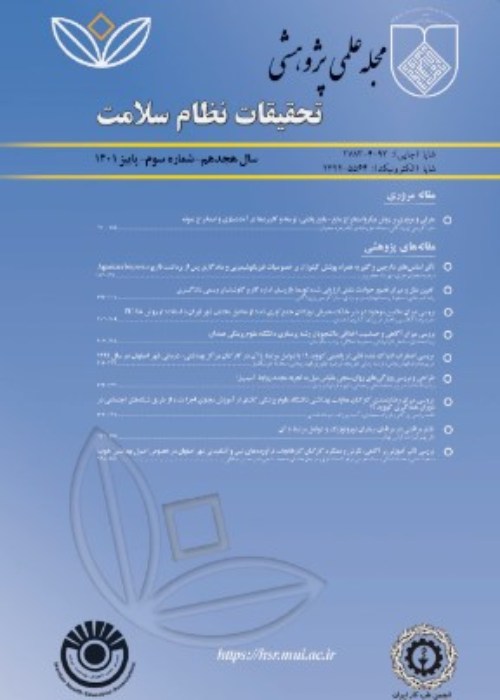An Evaluation of the Lactobacillus Population and Presence of Lactobacillus Acidophilus In Probiotic and Non-Probiotic Dairy Products Marketed in Isfahan, Iran
Author(s):
Abstract:
Background
According to national and international standards, probiotic food products must contain a certain population of probiotic strains, as much as one million viable cells in each gram of food material, as a basic prerequisite to be considered as probiotic food. This population should be kept stable during the storage and distribution chain until received by consumers in a sufficient number. The present study aimed to evaluate the quality control of probiotic products marketed in retails in Isfahan, Iran, in terms of the number of viable lactobacillus count in comparison to non-probiotic dairy product. In addition, the isolated strains were studied in terms of the manufacturers claim of using lactobacillus acidophilus.Methods
Probiotic products (n = 14) and non-probiotic products (n = 8) of commercial dairy brands were sampled from Isfahan market. Serial dilutions were made using normal saline, and surface plate count agar was carried out by inoculation of 100 µl of concentrations on the MRS (de-Man, Rogosa, and Sharpe) plates containing cysteine hydrochloride. After incubation and counting of colonies, 6 colonies with different morphological characteristic were sampled and purified from each plate after 72 hours. Double purification step was performed for the selected isolates in the MRS culture media with bromocresol green and cysteine hydrochloride. To separate probiotic and non-probiotic strains, growth test against X-Gal was used.Findings: Among the probiotic products, the average number of lactobacilli in yoghurt, kefir, and cheese was counted as 5.7 Log CFU, 6.32 Log CFU, and 6.27 Log CFU, respectively. Among non-probiotic products, an average lactobacillus population of 5.22 Log CFU, 3.6 Log CFU, and 3.62 Log CFU was found in yoghurt, doogh, and cheese, respectively. Only 5 probiotic labeled dairy products out of 14 tested samples (35%) were shown to contain the lactobacilli isolates capable of growth under bile containing MRS.
Conclusion
In conclusion, although the average count of viable lactobacilli in commercial probiotic products appeared to be slightly higher than that of non-probiotic dairy products, yet, this index differs greatly from the standards in the majority of the products offered in the market as probiotic foods. Particularly, commercial probiotic yogurts were shown to have lower L. acidophilus count than the standard level.Keywords:
Language:
Persian
Published:
Journal of Health System Research, Volume:13 Issue: 2, 2017
Pages:
187 to 197
magiran.com/p1741730
دانلود و مطالعه متن این مقاله با یکی از روشهای زیر امکان پذیر است:
اشتراک شخصی
با عضویت و پرداخت آنلاین حق اشتراک یکساله به مبلغ 1,390,000ريال میتوانید 70 عنوان مطلب دانلود کنید!
اشتراک سازمانی
به کتابخانه دانشگاه یا محل کار خود پیشنهاد کنید تا اشتراک سازمانی این پایگاه را برای دسترسی نامحدود همه کاربران به متن مطالب تهیه نمایند!
توجه!
- حق عضویت دریافتی صرف حمایت از نشریات عضو و نگهداری، تکمیل و توسعه مگیران میشود.
- پرداخت حق اشتراک و دانلود مقالات اجازه بازنشر آن در سایر رسانههای چاپی و دیجیتال را به کاربر نمیدهد.
In order to view content subscription is required
Personal subscription
Subscribe magiran.com for 70 € euros via PayPal and download 70 articles during a year.
Organization subscription
Please contact us to subscribe your university or library for unlimited access!


